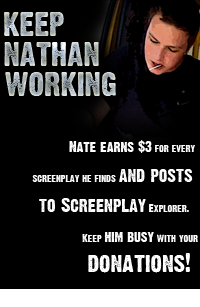The Screenwriter’s Bible: A Complete Guide to Writing, Formatting, and Selling Your Script![]()
How does a spec script differ from a shooting script? What kind of fasteners should one use to bind a script? How did the term MOS come to mean without sound? You’ll find the answers to these pressing questions and much more in David Trottier’s eminently usable Screenwriter’s Bible. The avuncular Trottier-a writer-producer, script consultant, and seminar leader-has written a friendly guide through the Hollywood morass. He touts it as six books in one: it’s “a screenwriting primer, a screenwriting workbook, a formatting guide, a spec writing guide, a sales and marketing guide, [and] a resource guide.”
Story: Substance, Structure, Style and The Principles of Screenwriting![]()
In Story, McKee puts into book form what he has been teaching screenwriters for years in his seminar on story structure, which is considered by many to be a prerequisite to the film biz. (The long list of film and television projects that McKee’s students have written, directed, or produced includes Air Force One, The Deer Hunter, E.R., A Fish Called Wanda, Forrest Gump, NYPD Blue, and Sleepless in Seattle.) Legions of writers flock to Hollywood in search of easy money, calculating the best way to get rich quick. This book is not for them. McKee is passionate about the art of screenwriting. “No one needs yet another recipe book on how to reheat Hollywood leftovers,” he writes. “We need a rediscovery of the underlying tenets of our art, the guiding principles that liberate talent.” Story is a true path to just such a rediscovery.
Crafting Short Screenplays That Connect, Third Edition![]()
Crafting Short Screenplays that Connect introduces the essential element of ‘human connection’ - the ability to ‘touch’ the reader or observer - to the screenwriting and story creation process for short films. Claudia Hunter Johnson teaches the craft of short screenplay writing by guiding you through carefully focused writing exercises of increasing length and complexity. You will learn how to think more deeply about the screenwriter’s purposes, craft an effective pattern of human change, and hone your vision and process for your short screenplays.
Cinematic Storytelling: The 100 Most Powerful Film Conventions Every Filmmaker Must Know![]()
What the industry’s most succcessful writers and directors have in common is that they have mastered the cinematic conventions specific to the medium. Jennifer Van Sijll’s book takes an intensive look at what takes years and lots of produced credits to learn. By using written scenes from movies, coupled with actual film scenes printed alongside, Jennifer teaches visual storytelling in a way few books have done.
Writing Movies: The Practical Guide to Creating Stellar Screenplays![]()
To break into the screenwriting game, you need a screenplay that is not just good, but great. Superlative. Stellar. Writing Movies provides everything you need to know to reach this level. In a single book. And, like the very best teachers, Writing Movies is always practical, accessible, and entertaining. Inside you’ll find: Explanations of the fundamental elements of screenwriting craft (plot, character, scenes, etc.); insight into such crucial (but seldom discussed) topics as description, voice, tone, and theme; analysis of five brilliant screenplays—Die Hard, Thelma & Louise, Tootsie, Sideways, and The Shawshank Redemption; strategies for breaking into the business; a guide to screenwriting format; assignments that strengthen your command of screenwriting craft; step-by-step tasks that take you from rough idea to polished script; and tie-ins to supplementary material at the book’s website. Written by Gotham Writers’ Workshop expert instructors and edited by Dean of Faculty Alexander Steele, Writing Movies offers the same methods and exercises that have earned the school international acclaim.
Save The Cat! The Last Book on Screenwriting You’ll Ever Need![]()
Blake Snyder is a working, selling writer himself, so that gives the reader a true inside glimpse into what it’s like, what it takes, and what to expect on the long road to screenwriting stardom. Many screenwriting how-to tomes are written by guys and gals who have few or no real studio credits, so with this book you can be sure you are getting the info direct from the source of a successful member of the Hollywood elite.
Snyder starts out with a bang, describing how important a good title, pitch and concept are, and giving tons of useful advise for whipping those log lines into shape, the best shape ever in fact, for as the author points out, many industry powerbrokers won’t even look beyond a log line…so it better be good. Damned good. He then discusses how to make your story like everything else out there, only different, and if you can come to understand that paradox, you will be a success indeed.




